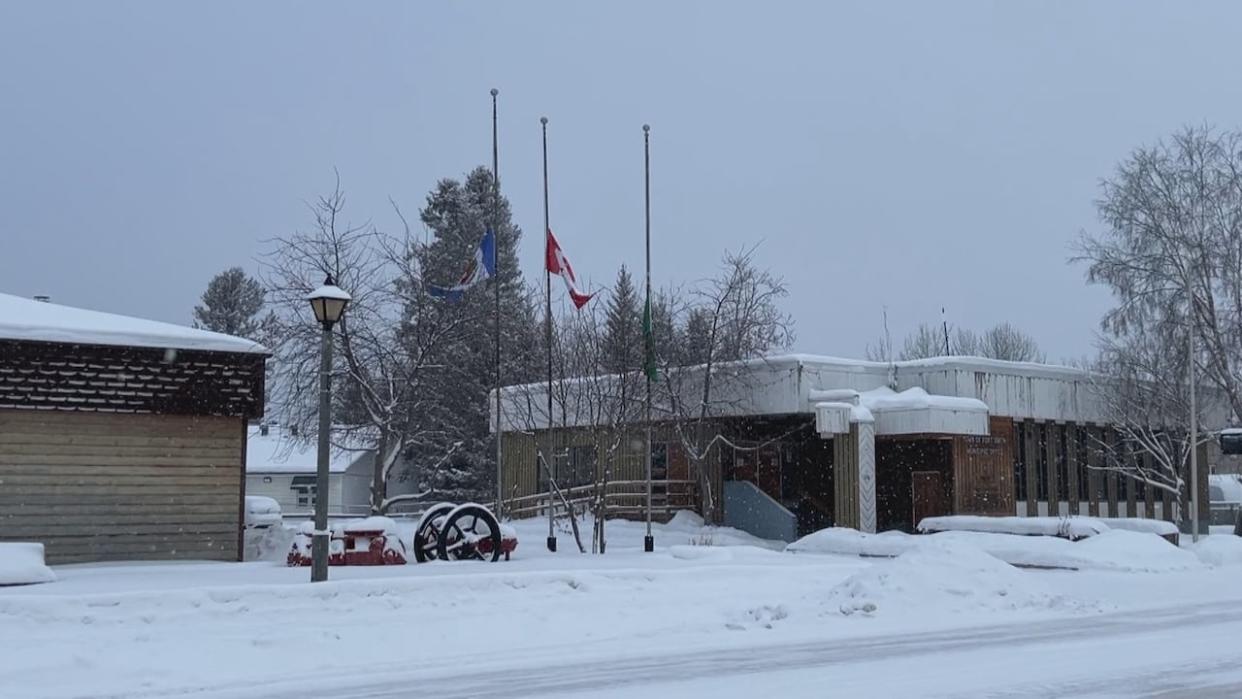Bad weather preventing transportation of Fort Smith plane wreckage for investigation

In the wake of a fatal plane crash in Fort Smith, many are eager for answers. But those answers won't come until the crash investigation is finished, a process delayed due to bad weather.
Freezing rain has meant the Transportation Safety Board of Canada has not been able to fly in the helicopters that will move the plane wreckage to Edmonton for further investigation.
Fort Smith town councillor Louise Beaulieu said it will be nice to have the wreckage removed.
"For the families, and for the community itself … [it will be] a little bit of relief to know that the investigation is progressing to hopefully get some sort of answer of what happened," she said.
Members of the town of 2,600 are mourning the loss of six community members from the Jan. 23 crash that killed all but one passenger.
Not knowing what happened makes it hard to process the grief, Beaulieu said.
"Everybody's opened their doors, you've got the wellness workers, you've got local businesses that are supporting families, and I think that's going to be an ongoing issue until … the investigators come back and let the people know what they have found, and what actually happened, to the best of their knowledge."
Once helicopters can get in, the material from the crash will all be taken to Edmonton where a team is ready to get to work, said Jon Lee, western regional manager of the Transportation Safety Board (TSB).
That team includes TSB members, as well as three people from the U.K.'s equivalent of the TSB, who will facilitate communication with the crashed plane's U.K.-based manufacturer.
But bad weather means the wreckage is still on site, adding a delay to what is already a challenging investigation: a fire, which burned for several hours after the crash, consumed about 80 per cent of the plane wreckage, Lee said.
"[The] information that we would traditionally use to understand how the aircraft impacted the trees and the terrain, that information is lost," he said.
"We do have one surviving passenger and [he may] be able to explain how he survived and the others did not. Normally if we had an intact passenger cabin … we could examine the doors, emergency exits, etcetera."
"All that information is gone, it's all burnt away," Lee said.
Lee said investigators spent almost three days at the crash site, and are confident that they have collected all of the remaining components of the airplane. And a key component, which may offer answers, may still be intact.
The cockpit voice recorder data, which is capable of withstanding high heat and impact, was stored in the tail section of the plane, and that's a section of the aircraft that wasn't as badly damaged, Lee said.
"We're optimistic that we should be able to get data from the recorder," he said.


